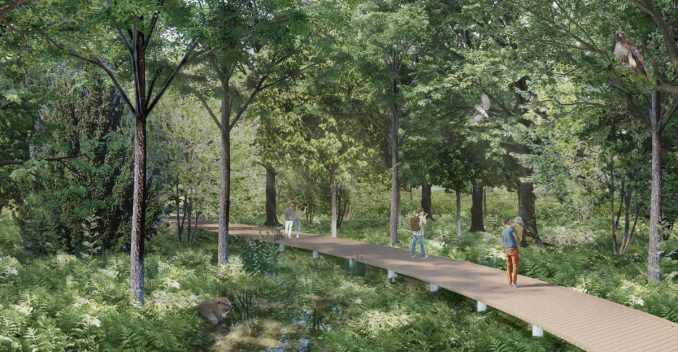
This design research examines the physical landscape transformation the Green New Deal introduced in 2019 implies on implementing the “jobs, justice, and decarbonization agenda” in USA. This research investigates and visualizes the possibility of establishing a “Carbon Bank” in the New York State context, which builds collective ownership investing in land-based solution that sequesters carbon. The research suggests a new program structure and governance in engaging different actors to address pressing issues faced by NY, including 1) increasing flooding risk and displacement under climate change, 2) shifting of hardiness zones that brings stress on farmland and forest, 3) land with deteriorating conditions that could provide future job opportunities.
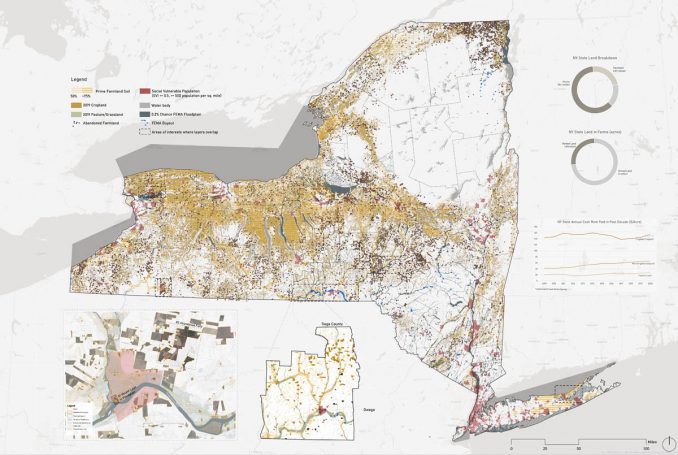
The Town of Owego in Tioga County was selected since the intersection of 1) abandoned farmland, 2) flood hazard zone, 3) prime farmland soil, and 4) vulnerable populations are identified through mapping. These qualities make Owego an ideal site to test the “Carbon Bank” idea. Within Owego, two different test sites were chosen to represent two land conditions that have great opportunities. The first site is located in the floodplain with buyouts, close to the downtown, and prime farmland soil. The second site is rural, found with inactive farmland and soils of state-wide importance.

The operation diagram indicates a list of available funds from federal, state, and other non-profit organization levels to manage the land. Depending on the site condition and surroundings, the Carbon Bank committee can decide on the management strategies to introduce planting, cutting and succession at different stages to maximize values.
Carbon credits can be earned through investing the land through proposed strategies, and money is also saved by allowing the forest to regenerate itself in some places.
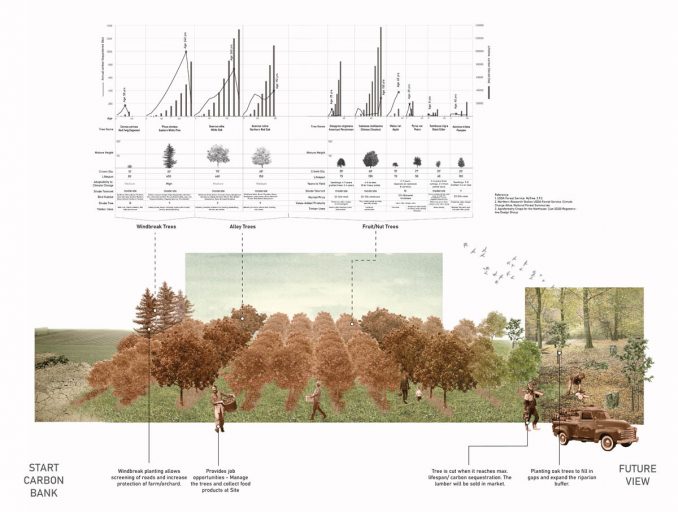
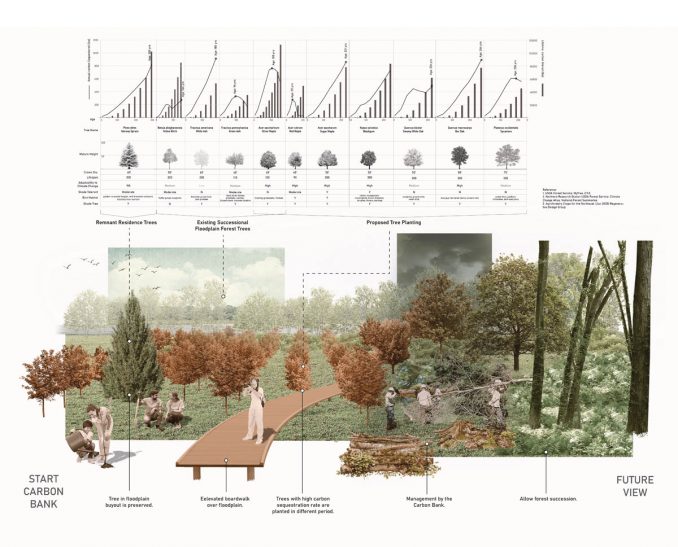
Reaching maximum carbon sequestration at different points and rates, a selection of tree is proposed at different development phases and positions across the two sites. Ash trees, for example, sequester greater amounts with a higher speed but are susceptible to climate change. They are therefore introduced in the early stage and is cut down later for lumber use. Not only does site 1 speculate a high carbon sequestration future scenario for a floodplain buyout area, but it also provides experiential quality to visitors, nature lovers and nearby residents. It projects a future with the harmonious coexistence of wildlife and human beings. Site 2 speculates a future forest transition from an agroforestry farm that provides jobs for farmers. Fruit trees with a shorter lifespan or reach maximum carbon sequestration earlier are planted closer to the existing forest patch to allow expansion in the future. Both sites have outcomes not limited to carbon sequestration tallies but also products from the land, resilience to climate change, community working together, habitat and biodiversity.


To conclude, the Carbon Bank is a collective that democratizes land access and introduces land-based design and management strategies that increase landscape values that respond to regional environmental, economic and social issues. It suggests that full-control management is not always necessary. It lowers the management costs and recognises the dynamic qualities and values of the local habitat.
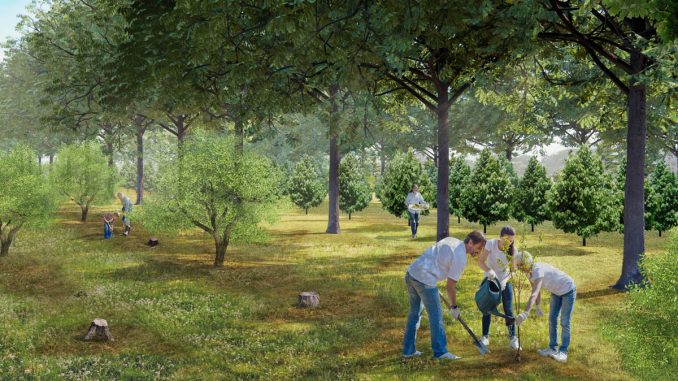
Student Project | Establishing a Carbon Bank – From Futile to Fertile | Hoi Ying Grace Lam
Project Name: Establishing a Carbon Bank – From Futile to Fertile
Student Name: Hoi Ying Grace Lam
School: Cornell University
Advisor: Jamie Vanucchi
